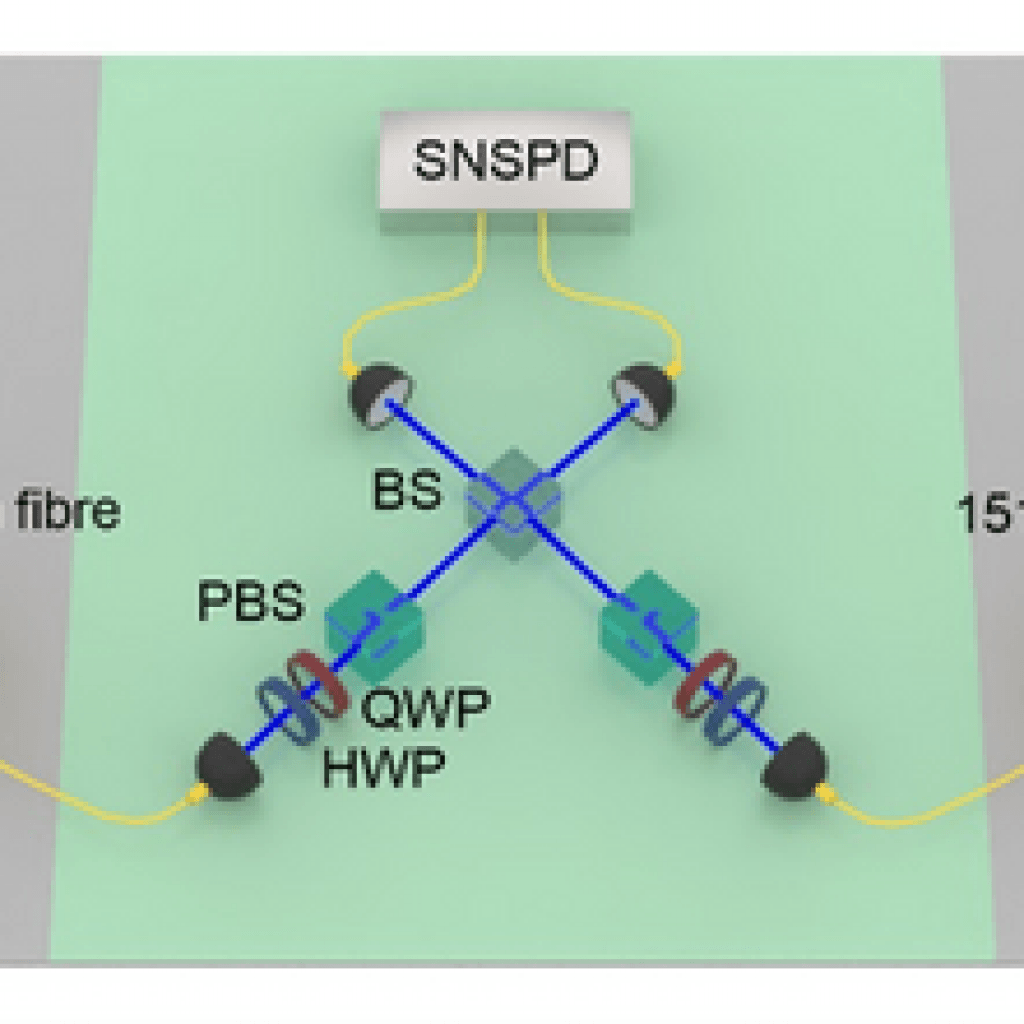As quantum computing advances, many experts within the quantum industry are looking at when a quantum internet (a network of quantum computers and quantum technologies all communicating with each other) will arise. The quantum internet is not only postulated to send signals at faster rates, but it can also send them more securely. According to a 2021 Nature paper: “the quantum internet will transfer quantum information from one node to another over long distances, based on a protocol called quantum teleportation. Teleportation is not only useful in extending the quantum communication distances but is also essential for distributed quantum computation.” It’s hard to predict when this next-generation infrastructure will come into play (as it will most likely start with shorter-range distances), but researchers are looking into various devices and methods to bring this network closer to fruition. One team of researchers in particular has been studying semiconductor quantum dots, which are nanodevices just a few meters across that could be used to emit photons for information exchange. In a new paper published in Advanced Photonics, these researchers were able to achieve interference between two quantum dots linked with optical fibers, suggesting a successful structure for a future quantum internet.
What are Quantum Dots?
Quantum dots (QDs) are often called “artificial atoms,” because they behave similarly to atoms on a much larger scale. They tend to be made of nanosized crystals that can transport electrons. Semiconductor quantum dots are usually made of semiconductor crystals (such as silicon) and can be part of an on-chip platform. These QDs can also interface with spin qubits, making them an attractive tool for developing the quantum internet.
When it comes to quantum communications, historically, quantum dots have a limited range of distances where they can communicate with each other. This is due to quantum interference, where “elementary particles can not only be in more than one place at any given time (through superposition) but that an individual particle, such as a photon (light particles) can cross its own trajectory and interfere with the direction of its path,” explained a 2011 TechTarget article. Because of this photonic interference, the distance between dots is rather limited, as in the past the distance can only be a few meters between QDs in order for the connection to work.
An Expanding Quantum Dot System
In a new experiment, an international team of researchers looked at expanding the distance between quantum dots while maintaining this interference. As Dr. Chao-Yang Lu, Professor of Physics at the University of Science and Technology of China explained: “The experimental setup is two independent artificial atoms (formed by two semiconductor quantum dots) as two quantum network nodes. Each emits a single photon, which, after traveling through 300 km of optical fiber, is then interfered with each other on a beam splitter. Because the two single photons are made truly identical to each other, the interference formed a dip, that is, the two photons also exit on the same output.” Because of this setup, the researchers were able to show that this interference, while fragile, was still intact over a larger distance. “Our work jumped from the previous QD-based quantum experiments at a scale from ~1 km to 300 km, two orders of magnitude larger, and this opens an exciting prospect of solid-state quantum networks,” added Dr. Lu.
Creating Quantum Dot Internet Networks
Because of this expansion in distance, Dr. Lu and his team are hopeful that this can help other researchers look into using these quantum dots to create a future quantum internet. While these dots show promise for this future network, they also offer many other benefits, including “high-rate quantum key distribution, long-distance quantum teleportation, multi-photon entanglement distribution across networks, and intermediate-scale quantum computation,” explained the Nature paper. Thanks to this advancement, semiconducting quantum dots may hold the keys to many different advances in quantum computing, and in time we may see more breakthroughs thanks to this technology.
Kenna Hughes-Castleberry is a staff writer at Inside Quantum Technology and the Science Communicator at JILA (a partnership between the University of Colorado Boulder and NIST). Her writing beats include deep tech, the metaverse, and quantum technology.
